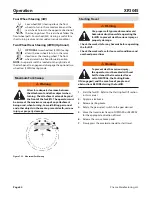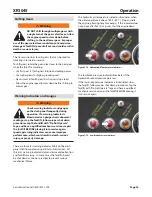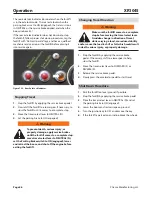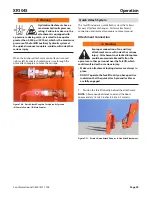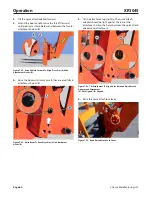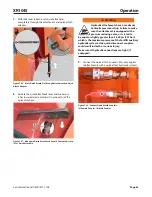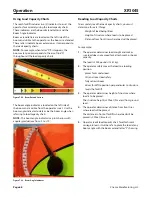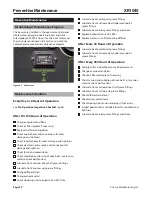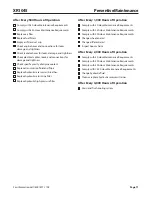
Page 68
Xtreme Manufacturing, LLC
Operation
XR1045
Using Load Capacity Charts
The reach forklift includes two (2) indicators to assist the
operator for accurately using the load capacity charts
These indicators are the Boom Extend Letters and the
Boom Angle Indicator
Boom extend letters are located on the left side of the
boom and visible to the operator as the boom is extended
These letters indicate boom extension as it corresponds to
the load capacity charts
NOTE:
For example, when letter “A” first appears, the
boom extension corresponds to the arc of line “A”
throughout all the load capacity charts
Figure 7-38. Boom Extend Letters.
The boom angle indicator is located on the left side of
the boom and is visible from the operator’s seat Use the
boom angle indicator to determine the boom angle when
referring to load capacity charts
NOTE:
The boom angle indicator is a plumb arrow with
angular graduations from -5 to +70°
Figure 7-39. Boom Angle Indicator.
Reading Load Capacity Charts
To accurately read the load capacity charts, you must
determine three (3) things:
• Weight of load being lifted
• Height of structure where load is to be placed
• Distance from front tires where load will be placed
For example:
1.
The operator determines load weight and makes
sure load does not exceed fork, attachment, or boom
capacity
The load is 3000 pounds (1361 kg)
2.
The operator safely moves the load to a loading
position:
• places forks under load
• tilts and raises load safely
• fully retracts boom
• drives forklift to position perpendicular to structure
• levels the forklift
3.
The operator determines height of structure where
load is to be placed
The structure height is 30 feet (9 meters) from ground
level
4.
The operator determines distance from front tires
where load will be placed
The distance in front of forklift where load will be
placed is 20 feet (6 meters)
5.
Operator reads load capacity chart for attachment
carriage to learn it will be safe to place the load at any
boom angle with the boom extend letter “F” showing

